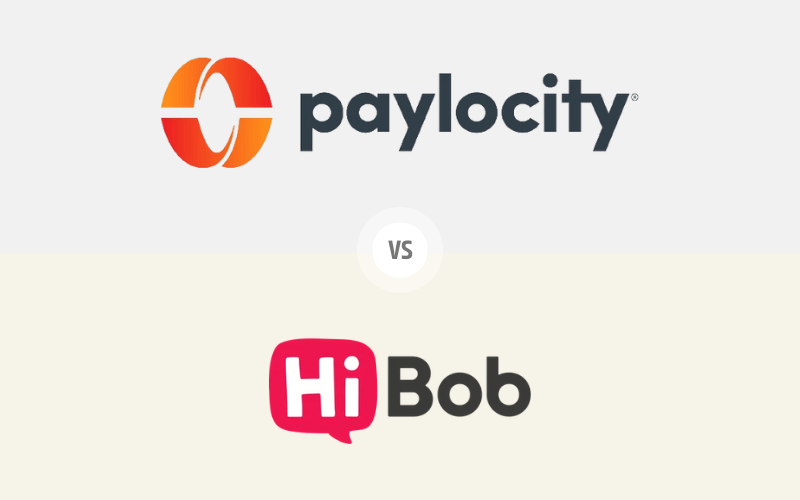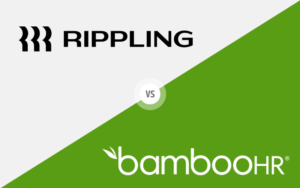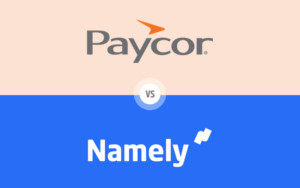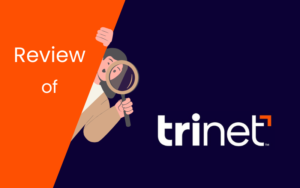In this comprehensive comparison of Paylocity vs Hibob, we explore the distinctions between these two prominent Human Capital Management (HCM) systems, helping you navigate their diverse functionalities and identify which may best suit your organization’s needs. From user interfaces to compliance features, and everything in between, this blog post aims to provide a clear and detailed understanding of what each platform offers, ensuring you make an informed decision tailored to your specific requirements.
Table of Contents
User Interface and User Experience
When evaluating the user interface (UI) and user experience (UX) of Paylocity vs Hibob, it’s essential to understand how each platform serves its users through design, functionality, and overall ease of use. Both Paylocity and Hibob aim to streamline HR tasks with their distinct interfaces, but their approaches offer unique experiences suited for different organizational needs.

Paylocity User Interface and User Experience
Paylocity offers a modern interface that is robust and user-friendly, designed to cater to diverse HR operations. The platform allows extensive customization of its dashboard, enabling HR teams to configure the layout to better fit their specific workflows.
Key Features of Paylocity UI/UX:
- Customization: Users can extensively personalize the dashboard and interface to align with their specific HR tasks and priorities. According to Paylocity’s website, this includes customizable reports and analytics.
- Ease of Use: Despite its comprehensive features, the platform maintains a user-friendly interface. However, some users report a learning curve due to the depth of functionality.
- Mobile Optimization: Paylocity offers a mobile app for both iOS and Android devices, allowing users to perform HR tasks efficiently from any device.
- Interactive Tools: The platform includes interactive charts and employee self-service portals to improve the overall user experience.
While Paylocity offers powerful customization options, some users on G2 have noted that implementing these features can be complex and may require additional training or support.
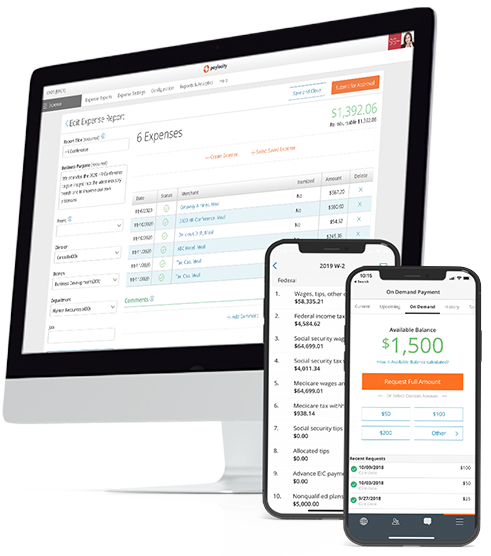
Hibob User Interface and User Experience
Hibob offers a streamlined UI that focuses on modern design and user-friendliness, making it appealing for startups and mid-sized companies. The interface is designed to be intuitive, with an engaging layout that aims to reduce the number of clicks needed to perform tasks.
Key Features of Hibob UI/UX:
- Modern Design: The UI is clean and vibrant, focusing on aesthetic appeal and functional simplicity, as highlighted on Hibob’s website.
- User Engagement: Hibob enhances user engagement through an interface that balances visual appeal with practical functionality.
- Social Integration: Unique social features integrate seamlessly into the workflow, fostering a collaborative and connected work environment.
- Responsive Design: The platform is highly responsive, ensuring a consistent experience across all devices.
While Hibob’s approach to UI and UX is particularly beneficial for quick adoption and ease of use, some users on G2 have noted that it may lack some of the more advanced features found in more comprehensive platforms.

Comparison and Conclusion
Choosing between Paylocity and Hibob for user interface and user experience requires a deep understanding of your organization’s needs, resources, and priorities.
- Paylocity excels in providing a highly customizable and feature-rich interface, making it an excellent choice for organizations that need detailed control and extensive features to support complex HR tasks. However, the depth of functionality comes with a learning curve, which can be a hurdle for smaller organizations or those without dedicated IT support.
- Hibob is ideal for companies seeking a straightforward, efficient, and engaging system. Its modern design and user-centric approach make it easy to adopt and foster high user engagement, especially suitable for younger or more dynamic companies.
Recent user reviews on G2 (as of July 2024) rate Paylocity at 4.3/5 stars and Hibob at 4.6/5 stars for ease of use, indicating high satisfaction with both platforms’ UI/UX, with a slight edge for Hibob in this area.
Ultimately, the choice between Paylocity and Hibob depends on your organizational scale, the complexity of your HR needs, and your preference for customization versus ease of use. By carefully evaluating these factors, you can select the platform that will best support your HR strategy, enhance productivity, and meet your specific requirements. This decision will significantly impact how effectively your HR team operates and how well the system is adopted across your organization, driving overall business success.
Core HR Functions
Core HR functions are fundamental to the effectiveness of any human capital management system. They include essential processes like employee information management, benefits administration, and compliance tracking. In this section, we delve into how Paylocity vs Hibob handle these crucial functionalities, highlighting the strengths and weaknesses of each to aid organizations in making an informed decision.

Paylocity Core HR Functions
Paylocity is well-regarded for its comprehensive approach to core HR functions. The platform integrates a wide range of HR tasks into a centralized system, making it easier for HR departments to manage and execute their duties efficiently.
Key Features of Paylocity Core HR Functions:
- Comprehensive Employee Records: Paylocity enables detailed employee profile management which integrates all essential employee data from hiring through retirement.
- Benefits Management: The system offers a robust benefits management module that simplifies enrollment and administration for a variety of plans, catering to diverse employee needs.
- Compliance Management: Paylocity provides tools for ensuring compliance with both federal and state regulations, including built-in safeguards and automatic updates to help organizations stay current with changing laws.
- Self-Service Portals: Employee self-service capabilities allow individuals to manage their personal information, benefits, and other HR-related tasks, reducing administrative burden on HR staff.
- Reporting and Analytics: Paylocity offers customizable reporting tools and real-time analytics to help organizations make data-driven decisions.
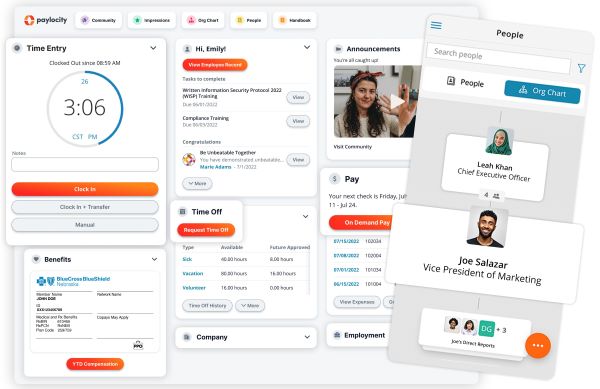
Hibob Core HR Functions
Paylocity’s all-in-one approach is particularly beneficial for larger organizations that require detailed and extensive management of employee data across multiple departments or locations. However, some users on review platforms have noted that the system’s breadth of features can require a learning curve for new users.
Hibob, marketed under the platform name ‘Bob,’ offers a streamlined and modern approach to core HR functions, focusing on simplifying and enhancing the user experience for dynamic and growing companies.
Key Features of Hibob Core HR Functions:
- User-friendly Employee Management: Hibob provides an intuitive interface for managing employee data that emphasizes ease of use and accessibility.
- Dynamic Benefits Administration: The platform offers flexible benefits management that can be customized to fit the unique requirements of different workforces.
- Automated Compliance Updates: Hibob stays current with compliance requirements and automatically updates its systems to reflect the latest laws and regulations.
- Engaging Employee Experience: Hibob enhances employee engagement through modern social tools and a highly interactive user interface that connects employees with their peers and HR processes.
- Integrations: Hibob offers numerous integrations with popular business tools, enhancing its functionality and allowing for seamless workflow across different platforms.
Hibob is especially appealing to startups and mid-sized companies due to its simplicity and focus on creating a vibrant employee experience. Recent updates to the platform include enhanced performance management tools and improved analytics capabilities.
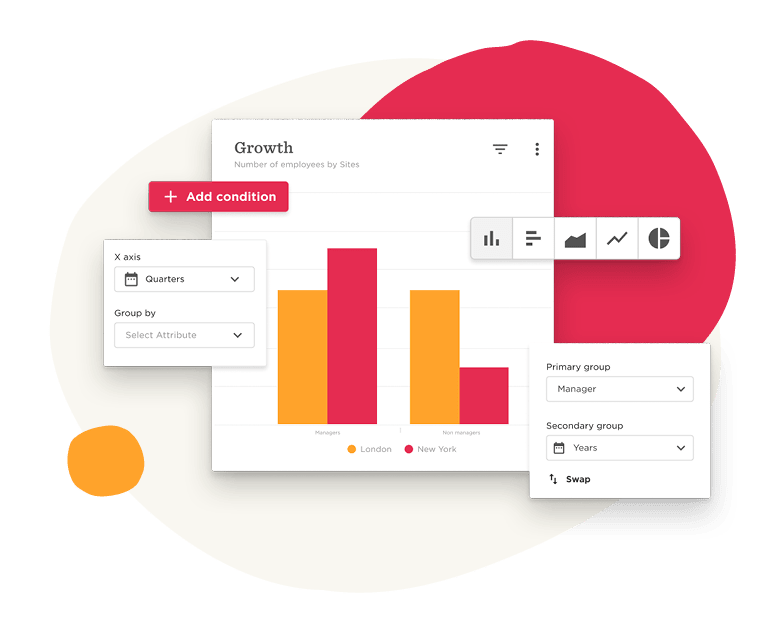
Comparison and Conclusion
When comparing Paylocity vs Hibob regarding core HR functions, the choice largely depends on the specific needs and scale of your organization.
- Paylocity offers a robust and detailed system ideal for larger organizations or those with complex HR management needs. Its extensive features support a broad spectrum of HR functionalities, making it a powerful tool for comprehensive HR management. Recent updates have focused on improving mobile accessibility and enhancing their analytics capabilities.
- Hibob provides a streamlined, user-friendly experience suited for smaller companies or those that prioritize ease of use and rapid deployment. While it may not offer the same depth of customization as Paylocity, it excels in user-friendliness and quick implementation.
In summary:
Both platforms are competent in their offerings but cater to different types of businesses based on size, growth stage, and specific HR needs. Paylocity’s strength lies in its comprehensive capabilities and detailed customization options, while Hibob shines in its simplicity and user-centric design.
User reviews on platforms like G2 and Capterra generally rate both systems highly, with Paylocity often praised for its depth of features and Hibob for its ease of use and modern interface. However, it’s important to note that individual experiences can vary based on specific organizational needs and implementation processes.
Choosing the right platform—whether Paylocity or Hibob—will greatly influence your organization’s ability to efficiently manage core HR functions, directly affecting overall operational effectiveness and employee satisfaction. It’s recommended to take advantage of demos or trial periods offered by both platforms to determine which best fits your organization’s unique requirements.
Payroll Management
Payroll management is a critical component of any HCM system, encompassing everything from salary disbursement to tax deductions and compliance. In this exploration of Paylocity vs Hibob, we assess how each software handles payroll processes, focusing on accuracy, ease of use, and regulatory compliance.

Paylocity Payroll Management
Paylocity is highly praised for its comprehensive payroll services that cater to businesses of all sizes. It integrates seamlessly with other HR functions to offer a unified solution for managing all aspects of payroll.
Key Features of Paylocity Payroll Management:
- Automation: Paylocity automates payroll calculations, tax filings, and paycheck distributions, significantly reducing manual effort and minimizing human error.
- Customization: The platform allows customization of payroll components according to different employee groups and job roles, ensuring flexibility across various organizational structures.
- Comprehensive Reporting: Detailed payroll reports can be generated easily, helping organizations maintain transparency and facilitating easier audits.
- Tax Compliance: Paylocity stays updated with the latest tax regulations, ensuring compliance and helping businesses avoid potential penalties.
- On-Demand Payment: Paylocity offers an on-demand payment feature, allowing employees to access earned wages before payday.
- Integration: The system integrates with various 401(k) and benefit providers, streamlining the overall compensation management process.
Paylocity’s robust payroll features are a major strength, particularly for organizations that require detailed and variable payroll configurations. The platform’s emphasis on automation and compliance makes it a reliable choice for complex payroll needs.
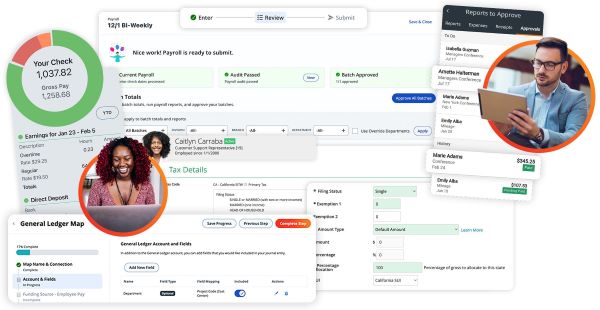
Hibob Payroll Management
Hibob takes a different approach to payroll management, focusing on integration rather than providing its own payroll system. This strategy allows for flexibility and compatibility with various payroll providers.
Key Features of Hibob Payroll Management:
- Payroll Hub: Hibob offers a Payroll Hub that integrates with various third-party payroll providers, including ADP WFN, Paylocity, TriNet, and Xero.
- Data Synchronization: The platform ensures that all employee data is synchronized and up-to-date across integrated systems, which is crucial for accurate payroll processing.
- User-Friendly Interface: Hibob emphasizes a user-friendly interface that simplifies the payroll process management, making it accessible even to users with minimal payroll experience.
- Real-Time Updates: The system offers real-time data updates, allowing for immediate adjustments and enhancing flexibility in payroll management.
- Compliance Support: While not providing direct payroll processing, Hibob helps maintain compliance by ensuring accurate data transfer to integrated payroll systems.
Hibob’s approach to payroll management is especially appealing for its flexibility and ease of use, making it ideal for companies that prefer to use their existing payroll providers or need the ability to switch providers easily.
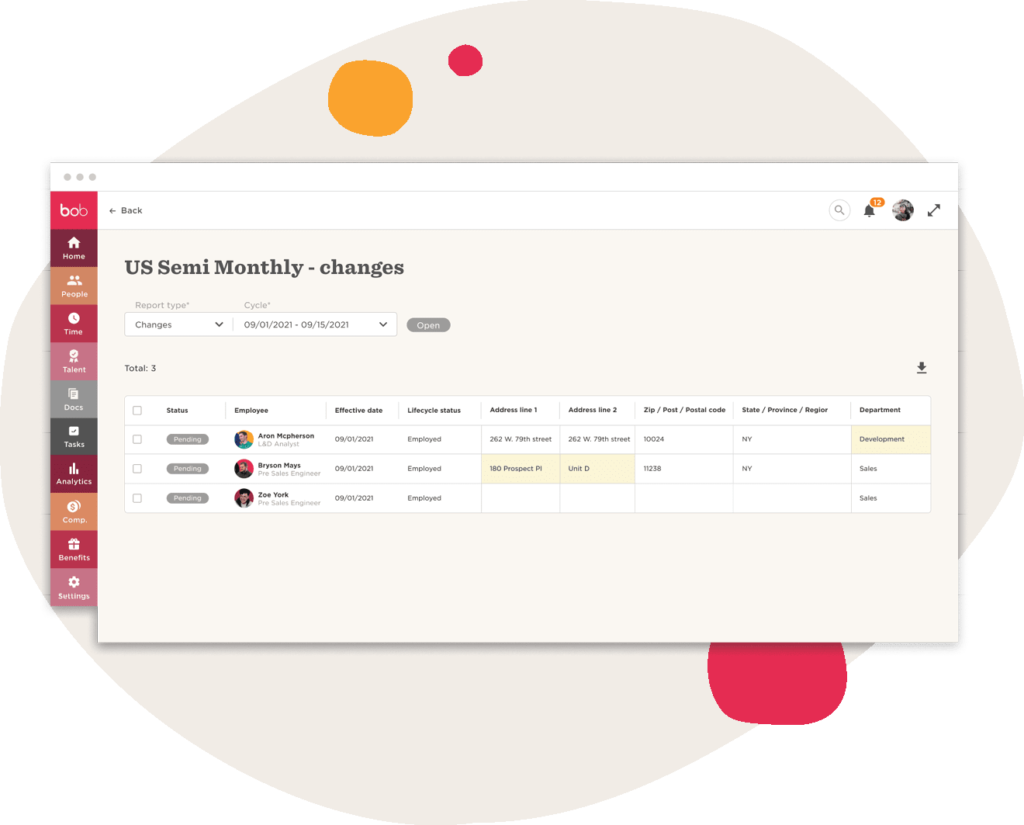
Comparison and Conclusion
The comparison between Paylocity vs Hibob in terms of payroll management hinges on the specific needs and existing systems of your organization.
- Paylocity offers a comprehensive, all-in-one solution ideal for organizations seeking a unified platform for both HR and payroll. It’s well-suited for businesses of various sizes, especially those with complex payroll needs. According to G2, Paylocity has a user satisfaction rating of 4.3/5 stars for its payroll features.
- Hibob provides a flexible integration approach, allowing businesses to connect with their preferred payroll providers. This makes it an excellent choice for companies that already have a payroll system they like or those that value the ability to easily switch between different payroll services. While Hibob doesn’t have specific ratings for payroll, its overall platform is rated 4.5/5 stars on G2.
In summary:
Choosing between Paylocity and Hibob for payroll management should be based on your company’s preference for an all-in-one solution versus a flexible integration approach. Paylocity offers a robust, built-in payroll system with extensive features, while Hibob provides the flexibility to work with various payroll providers through its integration hub.
Both platforms have their strengths, and the best choice depends on your organization’s specific requirements, existing systems, and future scalability needs. It’s recommended to take advantage of demos or trial periods offered by both platforms to determine which best fits your organization’s unique payroll management requirements.
Time and Attendance Tracking
Efficient time and attendance tracking is vital for workforce management, affecting everything from payroll processing to productivity analytics. In this section, we compare Paylocity vs Hibob to determine how each system handles these crucial functions, focusing on their features, ease of use, and integration capabilities.

Paylocity Time and Attendance Tracking
Paylocity offers a robust time and attendance system designed to accommodate the needs of both small businesses and large enterprises. The platform provides detailed insights into workforce activities, helping companies manage their labor costs more effectively.
Key Features of Paylocity Time and Attendance Tracking:
- Comprehensive Tracking Tools: Paylocity includes features like time clock integration, mobile time tracking, and biometric options, which help in reducing time theft and ensuring accurate time logging.
- Automated Scheduling: The system supports automated scheduling, which simplifies the creation and management of employee schedules, enhancing both compliance and efficiency.
- Integration with Payroll: Paylocity’s time tracking is seamlessly integrated with its payroll module, ensuring that hours worked are accurately reflected in payroll calculations.
- Customizable Alerts and Reporting: The platform offers customizable alerts for overtime, irregular attendance, and other exceptions, along with powerful reporting tools that help managers make informed decisions.
- Geofencing and GPS Tracking: Paylocity provides geofencing capabilities for mobile time tracking, ensuring accurate clock-ins for remote or field employees.
Paylocity’s time and attendance solutions are especially useful for organizations with complex scheduling needs or those that require tight integration between time tracking and payroll. According to G2, Paylocity’s Time and Attendance module has a user satisfaction rating of 4.3/5 stars.
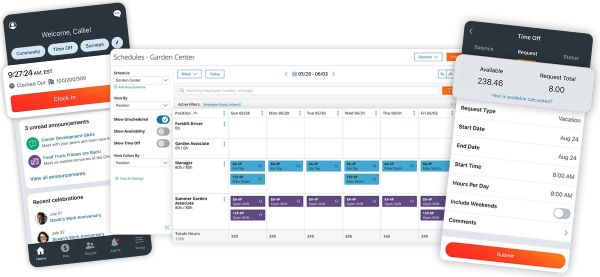
Hibob Time and Attendance Tracking
Hibob provides a streamlined approach to time and attendance tracking as part of its broader HR platform, particularly suited for startups and mid-sized companies. Its system emphasizes ease of use and efficient management.
Key Features of Hibob Time and Attendance Tracking:
- User-Friendly Interface: The UI is designed to make time tracking straightforward for all employees, regardless of their tech savviness.
- Mobile Access: Hibob offers mobile access for time tracking, allowing employees to clock in and out from their devices.
- Integration with Core HR Functions: Time tracking data is integrated with other HR functions within the Hibob platform, providing a unified view of employee data.
- Absence Management: The system includes features for managing time off, sick days, and other types of leave.
- Basic Reporting: Hibob offers reporting capabilities for time and attendance data, though they may be less extensive than Paylocity’s.
Hibob’s system is beneficial for companies that need a simple, effective solution that can be quickly adopted across the organization. While specific ratings for Hibob’s time and attendance features are not readily available, the overall platform has a 4.5/5 star rating on G2.
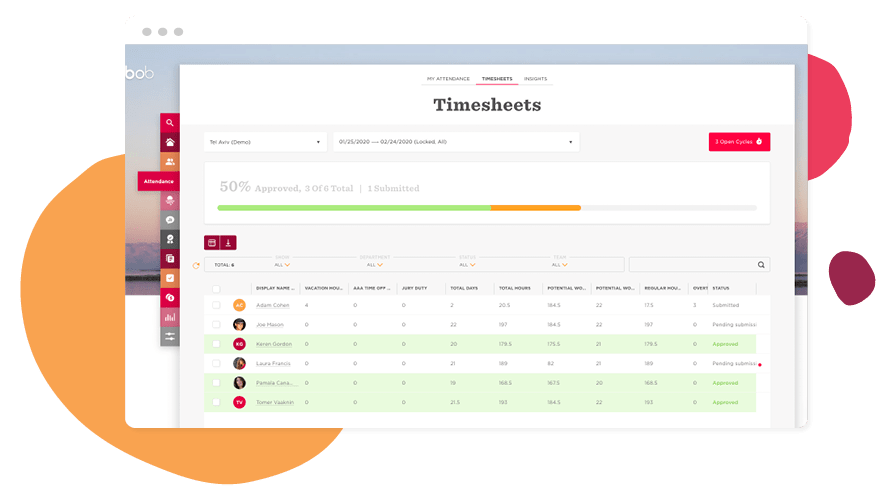
Comparison and Conclusion
When comparing Paylocity vs Hibob for time and attendance tracking, the choice depends largely on the specific operational needs and size of your organization.
- Paylocity is ideal for larger organizations or those with sophisticated labor management requirements. It offers extensive customization, detailed reporting, and tight integration with payroll, making it suitable for managing a large workforce with complex scheduling needs.
- Hibob is better suited for smaller businesses or those that prioritize ease of use and integration with a broader HR platform. Its system provides essential time tracking features within a comprehensive HR solution, supporting the dynamics of modern, agile businesses.
In summary:
Selecting between Paylocity and Hibob for time and attendance tracking should consider the scale of your operations, the complexity of your scheduling needs, and the level of integration required with other HR systems. Paylocity offers a more robust, standalone solution with advanced features like geofencing, while Hibob provides a more streamlined approach integrated into its broader HR platform.
Both platforms have recently updated their mobile capabilities to better support remote work trends. It’s recommended to take advantage of demos or trial periods offered by both platforms to determine which best fits your organization’s unique time and attendance tracking requirements.
Benefits Administration
Benefits administration is a key element of human capital management, involving the management of employee benefits such as health insurance, retirement plans, and other perks. Efficient benefits administration can significantly enhance employee satisfaction and retention. This section provides a detailed comparison of Paylocity vs Hibob in handling benefits administration, focusing on the features, usability, and integration capabilities of each platform.

Paylocity Benefits Administration
Paylocity is recognized for its comprehensive benefits administration capabilities, which cater to a wide range of company sizes and types. The platform facilitates seamless management of employee benefits, from enrollment to ongoing maintenance.
Key Features of Paylocity Benefits Administration:
- Extensive Benefits Options: Paylocity supports a wide array of benefit plans, including health, dental, vision, life insurance, and retirement plans, among others.
- Automated Enrollment and Management: The system automates critical processes such as enrollment deadlines, eligibility checks, and life event changes, reducing administrative workload and minimizing errors.
- Integrated Employee Self-Service: Employees can manage their benefits via a user-friendly self-service portal, enhancing transparency and satisfaction.
- Compliance Support: Paylocity includes tools to help organizations comply with federal and state regulations, ensuring that benefits management adheres to legal standards such as ACA and ERISA.
- Reporting and Analytics: The platform offers robust reporting capabilities, allowing organizations to analyze benefits utilization and costs effectively.
Paylocity’s comprehensive benefits administration tools are particularly valuable for larger organizations that require a wide range of benefits options and stringent compliance support. According to G2, Paylocity’s Benefits Administration module has a user satisfaction rating of 4.3/5 stars.
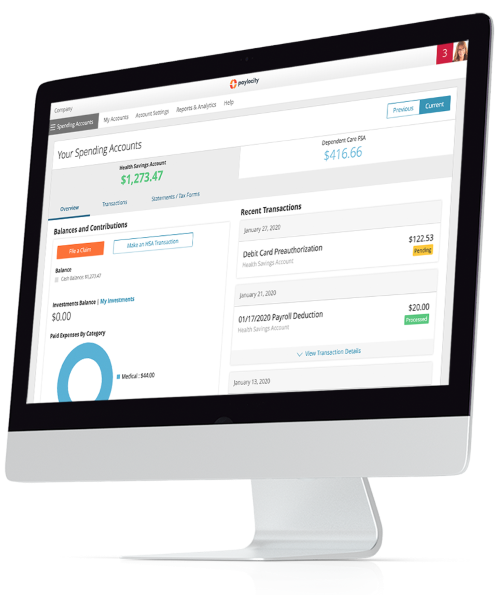
Hibob Benefits Administration
Hibob takes a different approach to benefits administration, focusing on integration and flexibility. Its platform is designed to work seamlessly with third-party benefits providers through its Payroll Hub.
Key Features of Hibob Benefits Administration:
- Integration with Third-Party Providers: Hibob’s Payroll Hub integrates with benefits administration solutions like bswift and Sequoia Tech, allowing companies to use their preferred benefits providers.
- User-Friendly Interface: The platform features a simple, clean interface that makes it easy for both HR administrators and employees to navigate and use.
- Flexible Benefits Management: Through its integrations, Hibob allows companies to manage various types of benefits plans, adapting to the unique needs of their workforce.
- Efficient Communication Tools: Hibob integrates communication tools that facilitate effective dissemination of benefits information, ensuring employees are well-informed and engaged.
- Basic Reporting: The system provides reporting capabilities on benefits utilization, though these may be less extensive than Paylocity’s offerings.
Hibob’s approach to benefits administration is particularly suited to startups and mid-sized companies that value flexibility and integration with existing benefits providers. While specific ratings for Hibob’s benefits administration features are not readily available, the overall platform has a 4.5/5 star rating on G2.
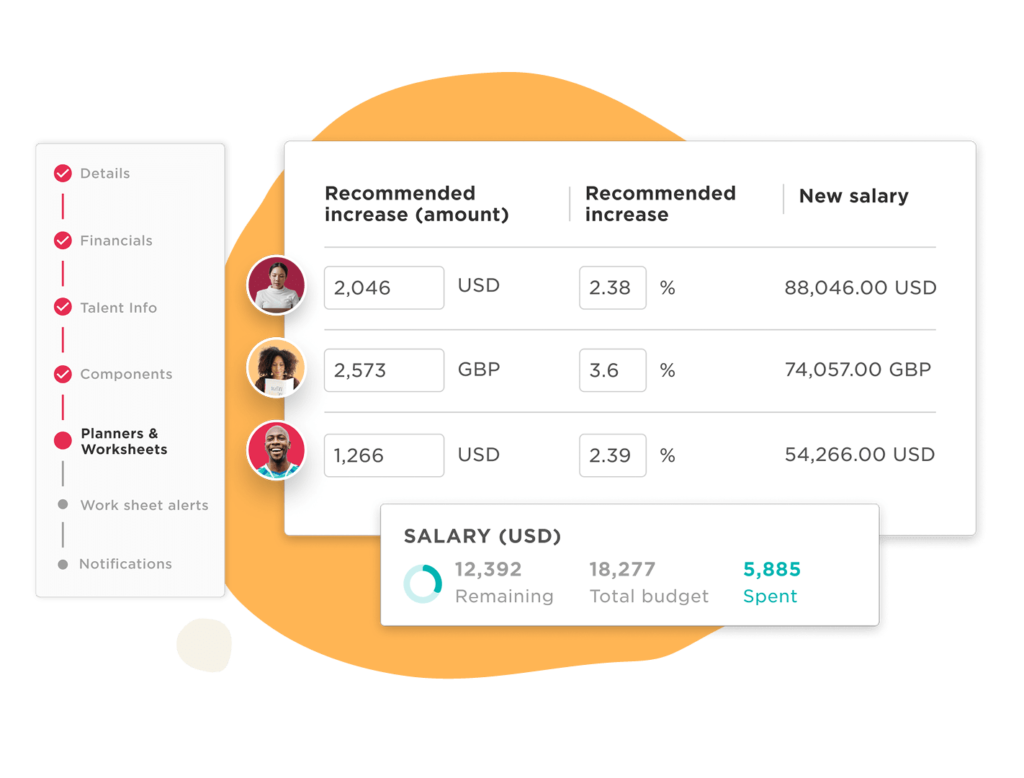
Comparison and Conclusion
Choosing between Paylocity vs Hibob for benefits administration depends on the specific requirements and size of your organization.
- Paylocity excels in offering a deep and customizable benefits solution, equipped with extensive compliance support and a wide range of built-in benefits options. It is ideally suited for larger companies or those with complex benefits needs that prefer an all-in-one solution.
- Hibob shines with its flexible integration approach, allowing businesses to connect with their preferred benefits providers. This makes it a great choice for companies that already have established relationships with benefits providers or those that value the ability to easily switch between different services.
In summary:
Both platforms provide robust benefits administration functionalities but cater to different organizational needs. Paylocity offers a comprehensive, built-in benefits administration system with extensive features, while Hibob provides flexibility through its integration-focused approach.
Recent updates to both platforms have focused on improving mobile accessibility and enhancing user experience in response to the growing trend of remote work. It’s recommended to take advantage of demos or trial periods offered by both platforms to determine which best fits your organization’s unique benefits administration requirements and existing systems.
Performance Management
Performance management is crucial for aligning individual goals with organizational objectives, enhancing employee productivity, and fostering professional growth. In this comparison of Paylocity vs Hibob, we examine how each platform supports performance management, focusing on their tools, functionalities, and user engagement to help organizations optimize their workforce potential.

Paylocity Performance Management
Paylocity is known for its robust performance management system that offers a comprehensive suite of tools designed to facilitate effective employee evaluations, goal setting, and feedback processes.
Key Features of Paylocity Performance Management:
- Customizable Review Cycles: Paylocity allows organizations to customize their review cycles, tailoring them to specific team or company-wide timelines.
- 360-Degree Feedback: The platform supports 360-degree feedback, enabling input from multiple sources, including peers, subordinates, and managers.
- Goal Setting and Tracking: Employees and managers can set and track goals directly within the system, linking them to broader company objectives.
- Real-Time Feedback: Paylocity encourages ongoing communication through real-time feedback tools, allowing for immediate recognition and constructive criticism.
Paylocity’s performance management system is highly valued in environments that demand flexibility and detailed performance tracking, making it suitable for larger organizations or those with a strong focus on strategic human resources management. According to G2, Paylocity has a “Likelihood to Recommend” score of 7.9 out of 10.
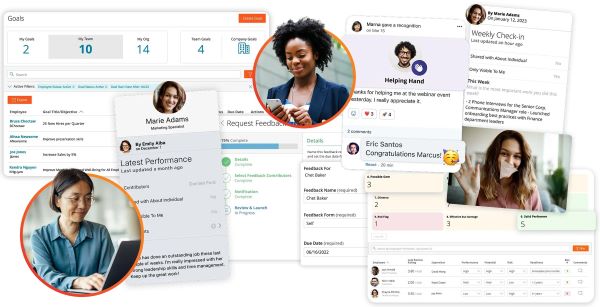
Hibob Performance Management
Hibob offers a highly customizable and intuitive approach to performance management, designed to engage and motivate a modern workforce. Its tools are geared towards fostering a supportive and transparent culture that drives performance improvements.
Key Features of Hibob Performance Management:
- Highly Customizable System: Hibob offers extensive customization options for performance management, employee surveys, and PTO cycles, allowing organizations to tailor the system to their specific needs.
- User-Friendly Interface: Hibob’s interface is clean and easy to navigate, reducing the complexity typically associated with performance management systems.
- Continuous Feedback: The platform emphasizes continuous feedback, integrating regular check-ins and updates that keep employees aligned with their personal and team goals.
- Integrated Recognition Features: Hibob integrates recognition features within its performance management module, allowing peers and managers to provide accolades for achievements.
- Agile Goal Management: Goals can be easily set, adjusted, and monitored through Hibob, supporting a dynamic approach to performance management.
Hibob is particularly effective for startups and mid-sized businesses that prioritize a flexible and engaging approach to performance management. It has a higher “Likelihood to Recommend” score of 8.0 out of 10 on G2.
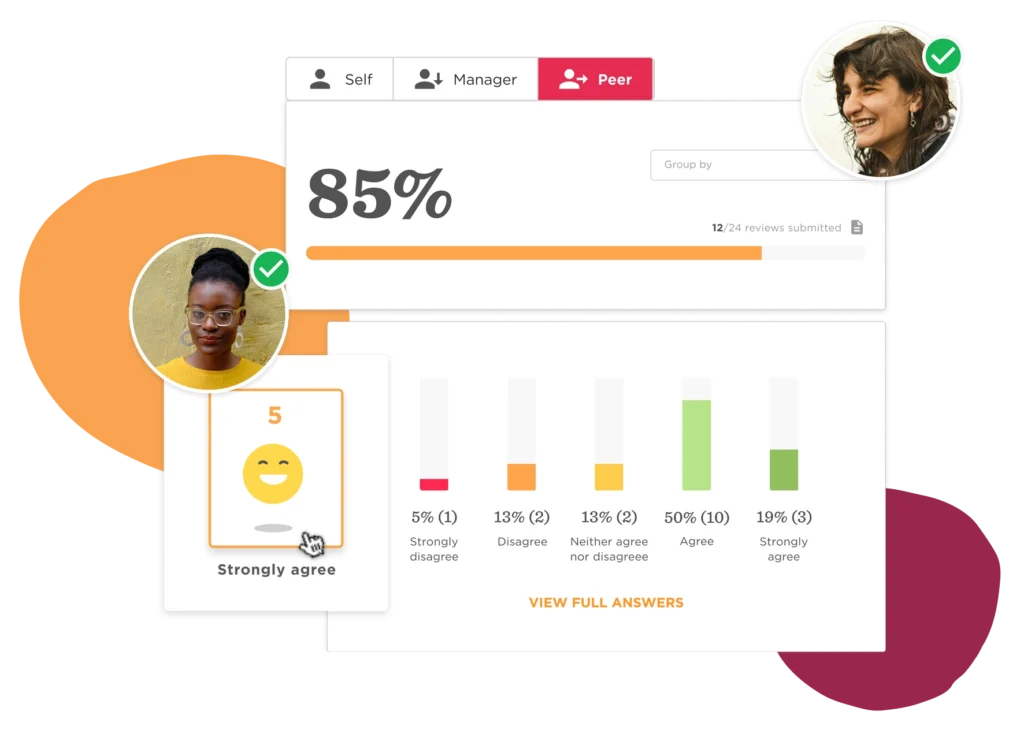
Comparison and Conclusion
The choice between Paylocity vs Hibob for performance management should be based on your organization’s size, the complexity of your performance evaluation needs, and your cultural emphasis on employee feedback and development.
- Paylocity is ideal for larger organizations or those that require a detailed performance management system. Its array of features supports a structured approach to managing employee performance.
- Hibob excels in environments that value high customization, flexibility, and a high degree of employee engagement. Its user-friendly platform is particularly suited for companies that emphasize a more adaptable approach to performance management.
In summary:
Both Paylocity and Hibob offer effective solutions for performance management, but they cater to different organizational needs and priorities. Paylocity provides a robust system for complex performance management processes, while Hibob offers a highly customizable system that focuses on continuous feedback and employee engagement.
It’s worth noting that Hibob integrates with Paylocity for payroll purposes, which could be beneficial for organizations looking to use both platforms for different aspects of their HR operations.
When making a decision, consider taking advantage of demos or trial periods offered by both platforms to determine which best fits your organization’s unique performance management requirements and existing systems. User reviews and ratings suggest high satisfaction with both platforms, with Hibob having a slight edge in user recommendations.
Talent Management and Recruiting
Talent management and recruiting are critical for attracting, hiring, and retaining top talent, which directly impacts an organization’s growth and success. This comparison of Paylocity vs Hibob focuses on how each platform facilitates these crucial HR functions, examining their tools for recruitment, onboarding, and talent retention.

Paylocity Talent Management and Recruiting
Paylocity provides a comprehensive talent management suite designed to streamline the recruitment process and enhance talent retention strategies. Its integrated approach helps organizations efficiently manage their entire talent lifecycle.
Key Features of Paylocity Talent Management and Recruiting:
- Advanced Recruitment Tools: Paylocity offers a robust applicant tracking system (ATS) that simplifies the process of tracking and managing job applicants.
- Customizable Onboarding Processes: The platform allows for the customization of onboarding processes, including automated task lists, welcome messages, and necessary paperwork.
- Performance Integration: Paylocity integrates performance management into the talent management process, allowing for seamless transition from onboarding to ongoing performance evaluations.
- Data-Driven Insights: Comprehensive analytics tools enable HR teams to gain insights into hiring trends, turnover rates, and other critical metrics.
Paylocity’s talent management and recruiting solutions are particularly valuable for larger organizations or those with complex hiring needs. According to G2, Paylocity has a “Likelihood to Recommend” score of 7.9 out of 10.
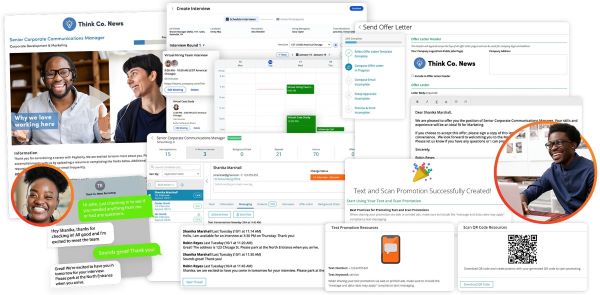
Hibob Talent Management and Recruiting
Hibob offers a modern and user-centric platform with streamlined talent management and recruiting tools designed to attract and retain a dynamic workforce. It focuses on simplifying processes with an emphasis on user experience and customization.
Key Features of Hibob Talent Management and Recruiting:
- Customizable Talent Management: Hibob offers highly customizable performance management, employee surveys, and PTO cycles, allowing organizations to tailor these processes to their specific needs.
- Seamless Onboarding Experience: New hires enjoy a streamlined onboarding experience that integrates them quickly and effectively into the team.
- Employee Lifecycle Management: Hibob excels in managing the employee lifecycle with tools that support continuous development and engagement.
- Engagement and Culture Tools: The platform includes unique tools for enhancing workplace culture and employee engagement, such as social feeds and public acknowledgments.
- Integration Capabilities: Hibob integrates with various systems, including Paylocity for payroll purposes, offering flexibility in HR operations.
Hibob is especially suited for startups and mid-sized companies that value simplicity, efficiency, and a high level of engagement in their talent management processes. It has a slightly higher “Likelihood to Recommend” score of 8.0 out of 10 on G2.
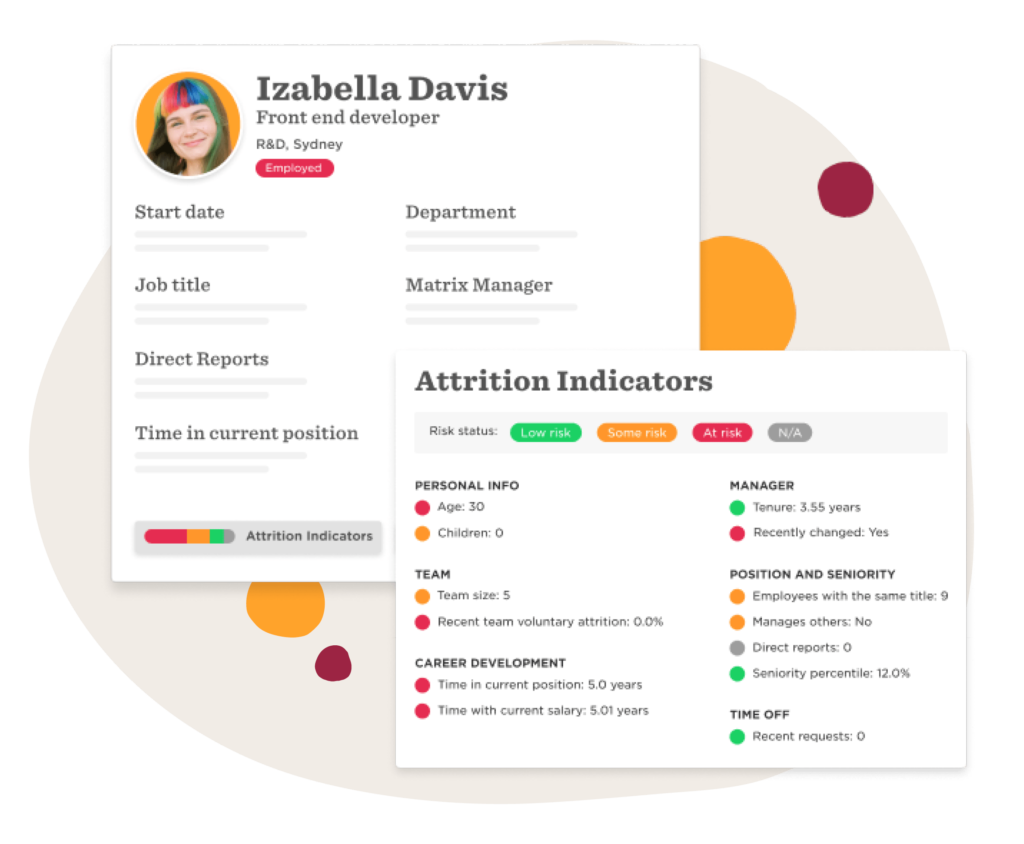
Comparison and Conclusion
Deciding between Paylocity vs Hibob for talent management and recruiting depends largely on the specific needs of your organization in terms of scale, complexity, and the strategic importance of innovative HR practices.
- Paylocity is well-equipped to handle the extensive and varied demands of larger organizations or those with a strategic focus on detailed talent analytics and comprehensive management features.
- Hibob is ideal for companies that emphasize a fast-paced, engaging, and highly customizable recruiting process, focusing on creating a vibrant and inclusive company culture from the start.
In summary:
Both Paylocity and Hibob provide robust tools for talent management and recruiting, but they cater to different types of organizations. Paylocity offers a more detailed approach suitable for complex environments, while Hibob offers a highly customizable, engaging experience that appeals to modern businesses looking for agility and a strong company culture.
Recent updates to both platforms have focused on enhancing user experience and mobile accessibility. Paylocity has introduced AI-powered recruiting tools, while Hibob has expanded its analytics capabilities for better talent insights.
When making a decision, consider taking advantage of demos or trial periods offered by both platforms to determine which best fits your organization’s unique talent management and recruiting requirements. User reviews and ratings suggest high satisfaction with both platforms, with Hibob having a slight edge in user recommendations.
Learning and Development
Learning and development (L&D) are pivotal for employee growth and organizational adaptation in an ever-evolving business landscape. Effective L&D programs are crucial for improving skills, increasing engagement, and retaining top talent. In this comparison of Paylocity vs Hibob, we evaluate how each platform supports the L&D needs of organizations, focusing on their tools, content accessibility, and integration with broader HR functions.

Paylocity Learning and Development
Paylocity offers a robust learning and development module designed to facilitate comprehensive training and professional development opportunities within its integrated HCM platform.
Key Features of Paylocity Learning and Development:
- Course Library: Paylocity provides access to a variety of courses covering different topics, which can be customized or expanded based on specific organizational needs.
- Customizable Learning Paths: Organizations can create tailored learning paths for employees, aligning with career progression plans and business goals.
- Interactive Learning Tools: The platform includes interactive tools such as quizzes, videos, and gamification elements to make learning engaging and effective.
- Integration with Performance Management: L&D initiatives are integrated with performance management features, allowing for the alignment of training outcomes with performance evaluations and goal setting.
Paylocity’s L&D solutions are particularly effective for larger organizations or those that require a structured approach to employee development, offering scalability and deep integration with other HR functions. According to G2, Paylocity has a “Likelihood to Recommend” score of 7.9 out of 10.
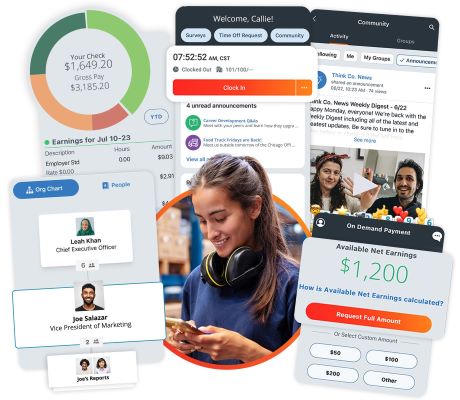
Hibob Learning and Development
Hibob provides a streamlined and flexible approach to learning and development, focusing on ease of use and engagement, which caters especially to the needs of modern, dynamic companies.
Key Features of Hibob Learning and Development:
- User-Friendly Interface: Hibob’s platform offers an intuitive user experience that encourages more frequent and voluntary participation in learning activities.
- On-Demand Learning: Employees can access learning materials anytime and anywhere, fitting their development into their schedule, which is ideal for supporting remote or distributed workforces.
- Social Learning Features: Hibob incorporates social learning features, such as forums and collaborative projects, which enhance the learning experience by leveraging peer insights and fostering a collaborative learning environment.
- Tracking and Reporting: The system provides tracking and reporting capabilities, allowing HR teams and managers to monitor progress and tailor further development efforts based on actual performance.
Hibob’s L&D module is well-suited for startups and mid-sized businesses that value flexibility, employee engagement, and a culture of continuous improvement. It has a slightly higher “Likelihood to Recommend” score of 8.0 out of 10 on G2.
Comparison and Conclusion
When comparing Paylocity vs Hibob for learning and development, the decision should be based on your organization’s size, the complexity of your L&D needs, and how closely you wish to integrate these initiatives with other HR functions.
- Paylocity excels in providing a comprehensive and customizable L&D platform that can support extensive training programs and is well-integrated with other key HR functions. It is ideal for larger organizations or those that require detailed oversight and structured learning pathways.
- Hibob is advantageous for companies looking for a flexible, user-friendly, and engaging approach to learning and development. It supports a culture of self-directed learning and is particularly effective in environments that emphasize agility and ongoing employee engagement.
In summary:
Both platforms offer effective tools for learning and development, but they cater to different types of organizations. Paylocity provides a detailed, structured system suitable for complex training needs, while Hibob offers a more agile and interactive approach, ideal for businesses that prioritize flexibility and innovation in their L&D strategies. The best choice will depend on the specific needs and strategic goals of your organization.
Recent updates to both platforms have focused on enhancing user experience and mobile accessibility. Paylocity has introduced new interactive learning tools, while Hibob has expanded its social learning features to foster better collaboration.
When making a decision, consider taking advantage of demos or trial periods offered by both platforms to determine which best fits your organization’s unique learning and development requirements. User reviews and ratings suggest high satisfaction with both platforms, with Hibob having a slight edge in user recommendations.
Reporting and Analytics
In today’s data-driven business environment, reporting and analytics capabilities within Human Capital Management (HCM) systems are essential for strategic decision-making and operational improvements. This section compares the Paylocity vs Hibob reporting and analytics features, evaluating how each platform enables organizations to leverage data for better business outcomes.

Paylocity Reporting and Analytics
Paylocity offers advanced reporting and analytics capabilities, designed to cater to the needs of medium to large-sized organizations requiring detailed HR insights.
Key Features of Paylocity Reporting and Analytics:
- Comprehensive Custom Reports: Paylocity allows users to generate custom reports covering various HR aspects, including payroll, benefits, and employee data.
- Dashboards and Visualization Tools: The platform offers intuitive dashboards and data visualization tools that help simplify complex data sets.
- Real-Time Data Access: HR teams and managers have access to real-time data, enabling timely decision-making.
- Data Insights: Paylocity provides tools for analyzing workforce trends and operational efficiencies, though the extent of predictive capabilities should be verified with the provider.
Paylocity’s analytics tools are beneficial for organizations that rely on detailed data analysis to guide their HR strategies and business decisions. According to G2, Paylocity has a “Likelihood to Recommend” score of 7.9 out of 10.
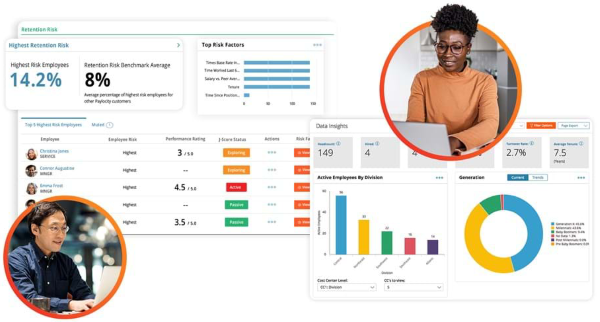
Hibob Reporting and Analytics
Hibob provides a streamlined approach to reporting and analytics, focusing on usability and efficiency. Its platform is designed to meet the needs of small to mid-sized businesses, emphasizing user-friendly tools that facilitate quick insights.
Key Features of Hibob Reporting and Analytics:
- User-Friendly Interface: Hibob’s analytics tools are built with a focus on simplicity, making it easy for non-technical users to generate and understand reports.
- Customizable Dashboards: Hibob offers customizable dashboards that provide essential metrics at a glance.
- Actionable Insights: The platform focuses on providing actionable insights to improve HR practices and employee engagement.
- Integration Capabilities: Hibob’s Payroll Hub integrates with various payroll providers, potentially enhancing data flow for payroll-related analytics.
Hibob’s approach to reporting and analytics is particularly appealing to companies that require straightforward, impactful insights. It has a slightly higher “Likelihood to Recommend” score of 8.0 out of 10 on G2.
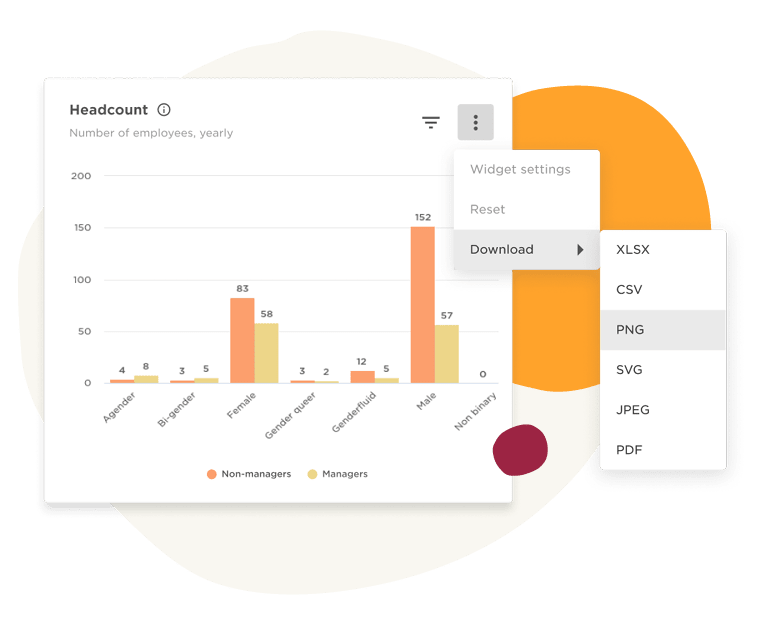
Comparison and Conclusion
Choosing between Paylocity vs Hibob for reporting and analytics should depend on the complexity of your data needs and the scale of your organization.
- Paylocity is well-suited for organizations that need a deep dive into data with sophisticated tools to handle complex analytics. Its features support extensive customization, making it ideal for larger companies with diverse data requirements.
- Hibob is advantageous for smaller organizations or those that prefer a more direct approach to data analysis. Its tools are designed to deliver quick insights and are easy to use, supporting fast-paced decision-making environments.
In summary:
Both platforms offer robust reporting and analytics capabilities, but they cater to different types of organizations. Paylocity provides extensive, customizable reporting suitable for detailed analysis and large-scale data needs, while Hibob offers a more streamlined, user-friendly approach that is ideal for smaller businesses focused on immediate, actionable insights.
Recent updates to both platforms have focused on enhancing data visualization and mobile accessibility. Paylocity has introduced new customizable dashboard features, while Hibob has expanded its integration capabilities to provide more comprehensive data insights.
When making a decision, consider taking advantage of demos or trial periods offered by both platforms to determine which best fits your organization’s unique reporting and analytics requirements. User reviews and ratings suggest high satisfaction with both platforms, with Hibob having a slight edge in user recommendations.
The optimal choice will reflect your company’s specific needs for data sophistication and the strategic importance of analytics in HR management. It’s advisable to verify the most current features and capabilities directly with the providers, as HCM platforms frequently update their offerings.
Compliance and Security
Compliance and security are critical aspects of Human Capital Management (HCM) systems, ensuring that sensitive employee data is protected and that business practices adhere to relevant laws and regulations. This comparison of Paylocity vs Hibob focuses on how each platform approaches these essential functions.

Paylocity Compliance and Security
Paylocity provides compliance and security measures designed to meet the requirements of organizations with complex needs.
Key Features of Paylocity Compliance and Security:
- Security Measures: Paylocity employs security measures to protect against unauthorized access and data breaches. The specific details of these measures should be verified with Paylocity directly.
- Compliance Tools: The system includes features that help manage compliance with various regulations. The extent and specifics of these tools should be confirmed with Paylocity.
- Data Privacy: Paylocity has policies and controls in place to handle employee information securely. The exact nature of these measures should be verified.
Paylocity’s compliance and security features are designed to support organizations that require a comprehensive approach to compliance management.
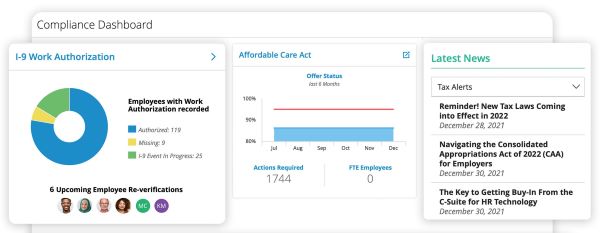
Hibob Compliance and Security
Hibob offers an approach to compliance and security that focuses on providing essential protections and compliance features.
Key Features of Hibob Compliance and Security:
- Security Features: Hibob implements security measures, including data protection protocols. The specific details should be confirmed with Hibob.
- Compliance Assistance: Hibob provides tools to help businesses remain compliant with key HR regulations. The extent of these tools should be verified with Hibob.
- Data Integrity and Access Controls: The platform enforces access controls and data integrity measures. The specifics of these controls should be confirmed.
Hibob’s compliance and security capabilities are designed to provide effective solutions for companies’ needs.
Comparison and Conclusion
When choosing between Paylocity vs Hibob for compliance and security, consider the specific security demands and regulatory requirements of your organization.
- Paylocity may be suitable for organizations requiring extensive compliance tools, though the specifics of their offerings should be verified directly with the company.
- Hibob might be a good choice for businesses seeking essential security protections and compliance support, but again, the exact features should be confirmed with Hibob.
In summary:
Both Paylocity and Hibob provide compliance and security features, but the specific details of these features are not publicly available and should be verified directly with each provider. When making a decision, it’s advisable to:
- Request detailed information about compliance and security features from both Paylocity and Hibob.
- Ask about any certifications or compliance standards that each platform adheres to.
- Inquire about recent updates or unique features in their compliance and security offerings.
- Consider scheduling demos to get a firsthand look at the compliance and security tools each platform offers.
- If possible, seek out user reviews or testimonials specifically related to the platforms’ compliance and security capabilities.
The best choice will depend on your company’s specific regulatory challenges and security needs. Due to the sensitive nature of security measures, it’s crucial to engage directly with these providers to get the most accurate and up-to-date information about their compliance and security features.
Integration and Compatibility
In the rapidly evolving landscape of business technology, the ability of Human Capital Management (HCM) systems to integrate seamlessly with other business applications is crucial. This analysis of Paylocity vs Hibob focuses on their capabilities for integration and compatibility, based on available information and user feedback.
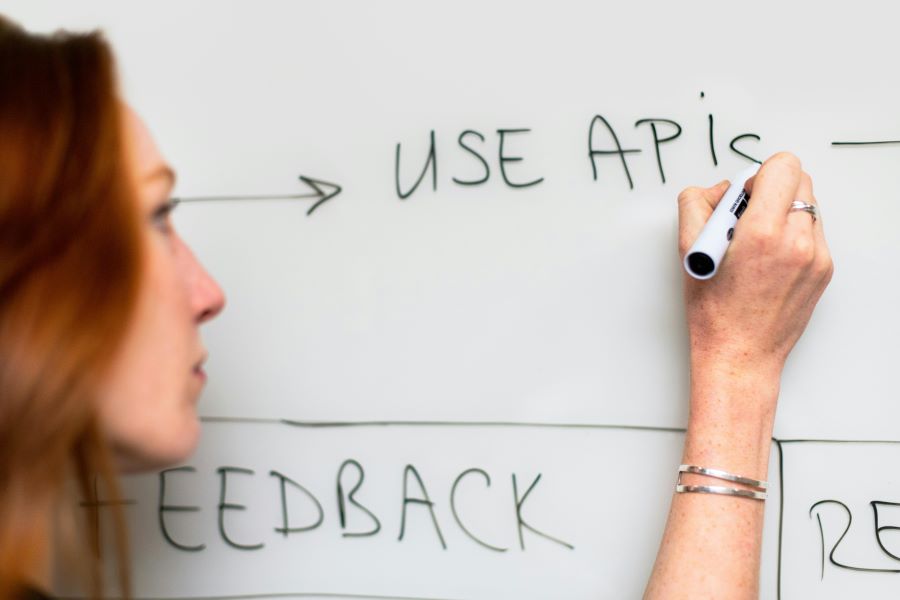
Paylocity Integration and Compatibility
Paylocity offers integration capabilities designed to connect with various third-party applications and internal systems.
Key Features of Paylocity Integration and Compatibility:
- Data Integration: Paylocity provides automatic transfer of 401(k) information, retirement plans, and benefit files to preferred vendors, facilitating easy integration.
- Third-Party Connections: While specific details should be verified with Paylocity, the platform likely supports connections with various HR-related tools and systems.
- Customization Options: Paylocity offers customization features, though the extent of these should be confirmed directly with the provider.
Paylocity’s integration features are designed to support organizations in maintaining a cohesive technology ecosystem. According to G2, Paylocity has a “Likelihood to Recommend” score of 7.9 out of 10.
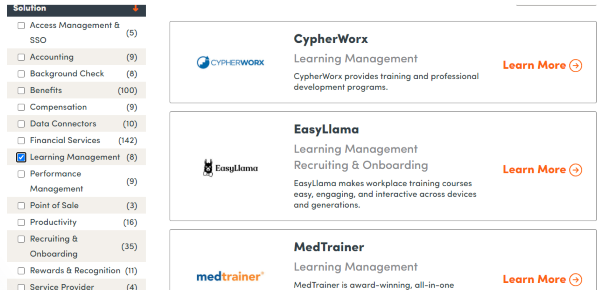
Hibob Integration and Compatibility
Hibob takes a modern approach to integration and compatibility, focusing on flexibility and ease of use for growing companies.
Key Features of Hibob Integration and Compatibility:
- Payroll Integration: Hibob offers a one-way integration with Paylocity for payroll purposes, allowing data to flow from Hibob to Paylocity.
- Customizable Features: Hibob is noted for having more customizable performance management, employee surveys, and PTO cycles compared to many other tools.
- Third-Party Connections: While specific integrations should be verified with Hibob, the platform likely supports connections with various modern business tools.
Hibob’s approach to integration and compatibility is particularly appealing to startups and mid-sized businesses looking for flexibility. It has a slightly higher “Likelihood to Recommend” score of 8.0 out of 10 on G2.
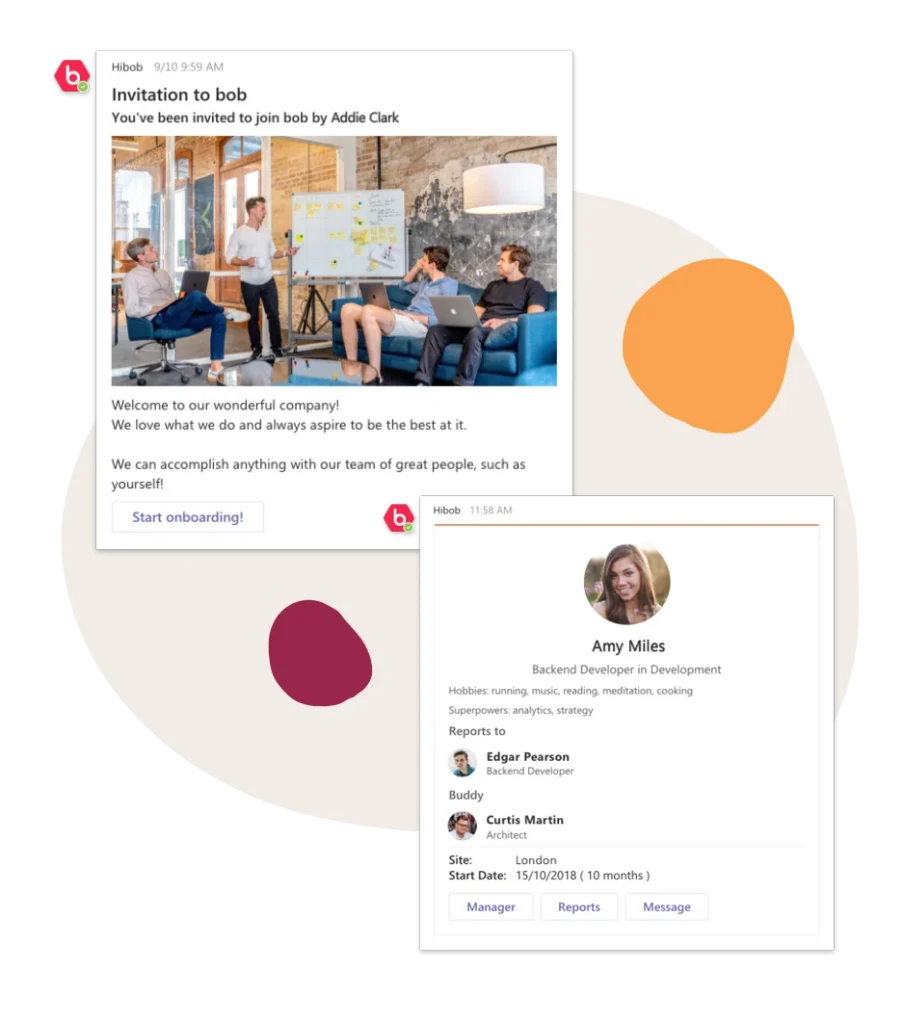
Comparison and Conclusion
When choosing between Paylocity vs Hibob for integration and compatibility, consider your organization’s specific needs and existing technology stack.
- Paylocity may be well-suited for organizations that require integration with traditional HR and payroll systems, offering features that support data transfer and vendor connections.
- Hibob might be ideal for companies that value customization and modern integrations, particularly those already using or considering Paylocity for payroll.
In summary:
Both Paylocity and Hibob offer integration capabilities, but they may cater to different types of companies. Paylocity provides solutions that seem to focus on traditional HR and payroll integrations, while Hibob offers modern customization options and specific integration with Paylocity for payroll.
To make an informed decision:
- Request detailed information about integration capabilities directly from both Paylocity and Hibob.
- Consider your current and future integration needs, especially regarding payroll and other HR functions.
- Evaluate the customization options each platform offers, as Hibob is noted for its flexibility in certain areas.
- If possible, seek out user reviews or testimonials specifically related to the platforms’ integration and compatibility features.
- Consider scheduling demos to get a firsthand look at how each platform might integrate with your existing systems.
Remember that technology offerings evolve rapidly, so it’s crucial to verify the most current features and integration capabilities directly with each provider before making a decision.
Customer Support and Service
Customer support and service are vital for the successful implementation and ongoing use of Human Capital Management (HCM) systems. In this comparison of Paylocity vs Hibob, we evaluate each platform’s customer support based on available information and user feedback.

Paylocity Customer Support and Service
Paylocity offers customer support designed to assist organizations of various sizes. However, user experiences with their support seem to vary.
Key Features of Paylocity Customer Support and Service:
- Support Channels: Paylocity likely provides multiple support channels, though specific details should be verified with the company.
- Online Resources: The platform probably offers online resources to assist users, but the extent of these should be confirmed.
- Training and Onboarding: While Paylocity likely provides training, some users have reported needing more training before implementation.
It’s important to note that some users have reported issues with Paylocity’s support. According to user feedback, “Customer support was slow to respond and our assigned rep was often changing, which meant they had limited knowledge of the system.” This suggests that the quality of support may be inconsistent.
According to G2, Paylocity has a support rating of 7.2 based on 87 ratings.
Hibob Customer Support and Service
Hibob offers customer support that focuses on efficiency and responsiveness, which seems to align well with the needs of modern, agile businesses.
Key Features of Hibob Customer Support and Service:
- Responsive Support Team: Users have noted Hibob’s “quick response time and support from the HiBob team,” indicating a focus on prompt assistance.
- Self-Service Options: While specific details should be verified, Hibob likely offers self-service support options.
- Customization: Hibob is noted for having “more customizable performance management, employee surveys, and PTO cycles than most of the tools I’ve evaluated,” which could contribute to overall user satisfaction.
Hibob’s support approach appears to be designed for efficiency and user empowerment. However, it’s worth noting that on G2, Hibob has a support rating of 6.9, but this is based on only 4 ratings, so it may not be as representative as Paylocity’s score.
Comparison and Conclusion
When choosing between Paylocity vs Hibob for customer support and service, consider your organization’s specific support needs and preferences.
- Paylocity offers a support system that caters to various organization sizes. However, user feedback suggests there may be inconsistencies in the quality of support provided.
- Hibob seems to focus on quick, efficient support, which may be well-suited for companies that value rapid response times. Their high level of customization in certain areas could also contribute to user satisfaction.
In summary:
Both Paylocity and Hibob offer customer support, but user experiences and ratings suggest there may be differences in the consistency and quality of support provided. Paylocity has a slightly higher support rating on G2, but also has more ratings, which could provide a more accurate representation of their support quality.
To make an informed decision:
- Request detailed information about support options directly from both Paylocity and Hibob.
- Consider your organization’s support needs, including preferred communication channels and the level of assistance required during implementation.
- Take into account the user feedback regarding support quality and responsiveness.
- If possible, speak with current users of both platforms to get firsthand accounts of their support experiences.
- Consider the importance of customization features, as Hibob’s flexibility in certain areas could impact overall satisfaction with the platform.
Remember that support quality can change over time, so it’s crucial to get the most current information from each provider and consider recent user reviews when making your decision.
Pricing and Cost-effectiveness
Understanding the pricing structures and cost-effectiveness of Human Capital Management (HCM) systems is crucial for businesses looking to maximize their investment. This comparison of Paylocity vs Hibob focuses on their general pricing approaches and value proposition.

Paylocity Pricing and Cost-effectiveness
Paylocity offers a flexible pricing model designed to accommodate businesses of various sizes.
Key Features of Paylocity Pricing and Cost-effectiveness:
- No Setup Fee: Paylocity offers an entry-level setup without a setup fee, which can be attractive for businesses looking to minimize initial costs.
- Customizable Solutions: While specific pricing details are not publicly available, Paylocity likely offers customizable solutions that can be tailored to an organization’s needs.
- Scalability: Paylocity’s pricing model is designed to accommodate businesses as they grow, from small firms to large enterprises.
Paylocity’s approach to pricing appears to focus on flexibility and scalability. According to G2, Paylocity has a “Likelihood to Recommend” score of 7.9 out of 10 and a “Likelihood to Renew” score of 8.0, suggesting a good perceived value among users.
For more information about pricing, please visit Paylocity’s website.
Hibob Pricing and Cost-effectiveness
Hibob offers a competitive pricing model that aims to provide value to businesses of various sizes.
Key Features of Hibob Pricing and Cost-effectiveness:
- No Setup Fee: Like Paylocity, Hibob also offers an entry-level setup without a setup fee.
- Integration Capabilities: Hibob integrates with Paylocity for payroll purposes, which could potentially affect overall cost-effectiveness depending on a company’s needs.
- Modern Features: Hibob is noted for having more customizable performance management, employee surveys, and PTO cycles than many other tools, which could contribute to its value proposition.
Hibob’s pricing strategy seems to focus on providing modern, customizable features. On G2, Hibob has a slightly higher “Likelihood to Recommend” score of 8.0 out of 10, and a “Likelihood to Renew” score of 8.1, indicating strong user satisfaction.
For more information about pricing, please visit Hibob’s website.
Comparison and Conclusion
When comparing Paylocity vs Hibob for pricing and cost-effectiveness, consider the following:
- Company Size Adaptability: Both platforms appear to be suitable for various company sizes. G2 ratings show identical scores for both platforms across small businesses, medium-sized companies, and enterprises.
- Feature Set: While both offer comprehensive HCM features, Hibob is noted for some highly customizable elements that could provide additional value.
- Integration: Hibob’s integration with Paylocity for payroll could be a factor in cost considerations, depending on your organization’s needs.
In summary:
Both Paylocity and Hibob offer competitive pricing models designed to provide value to businesses of different sizes. Neither charges a setup fee for their entry-level setup, which can be attractive for companies looking to minimize initial costs.
To make an informed decision:
- Request detailed pricing information directly from both Paylocity and Hibob, as specific pricing structures are not publicly available.
- Consider your organization’s current size and growth projections, as both platforms seem adaptable to various company sizes.
- Evaluate the importance of specific features, such as Hibob’s noted customizability in certain areas, in relation to your company’s needs.
- Factor in potential integration costs or savings, particularly considering Hibob’s integration with Paylocity for payroll.
- Consider the user satisfaction ratings, which are slightly in favor of Hibob but very close for both platforms.
Remember that pricing in the HCM industry can be complex and may change over time. It’s crucial to get the most current and detailed information directly from each provider to make an accurate comparison based on your specific business needs.
User Reviews and Testimonials
User reviews and testimonials provide valuable insights into the real-world performance and user satisfaction of Human Capital Management (HCM) systems. This comparison of Paylocity vs Hibob draws on available user feedback to highlight the strengths and potential areas for improvement of each system.

Paylocity User Reviews and Testimonials
Paylocity receives mixed reviews from users, with praise for its comprehensive features but some concerns about support and implementation.
Key Highlights from Paylocity User Reviews:
- Positive Feedback:
- Comprehensive Features: Users often commend Paylocity for its extensive range of features that cover various aspects of HR management.
- Customization Capabilities: Many reviews highlight the platform’s ability to customize features to fit specific organizational needs.
- Areas for Improvement:
- Customer Support: Some users report slow response times from customer support, with one user noting, “Customer support was slow to respond and our assigned rep was often changing, which meant they had limited knowledge of the system.”
- Implementation Challenges: There are mentions of issues with initial installation and the need for more training before implementation.
According to G2, Paylocity has a “Likelihood to Recommend” score of 7.9 out of 10 and a support rating of 7.2 based on 87 ratings.
Hibob User Reviews and Testimonials
Hibob generally receives positive feedback for its user-friendly design and responsive support.
Key Highlights from Hibob User Reviews:
- Positive Feedback:
- User-Friendly Design: Many users appreciate the intuitive design and ease of navigation on Hibob’s platform.
- Responsive Customer Support: Users report high satisfaction with the speed and effectiveness of Hibob’s customer support team, with one user noting “quick response time and support from the HiBob team.”
- Customizable Features: Hibob is noted for having “more customizable performance management, employee surveys, and PTO cycles than most of the tools I’ve evaluated.”
- Areas for Improvement:
- While specific areas for improvement are not mentioned in the provided search results, it’s worth noting that Hibob has fewer ratings overall compared to Paylocity.
Hibob has a slightly higher “Likelihood to Recommend” score of 8.0 out of 10 on G2, and a support rating of 6.9, though this is based on only 4 ratings.
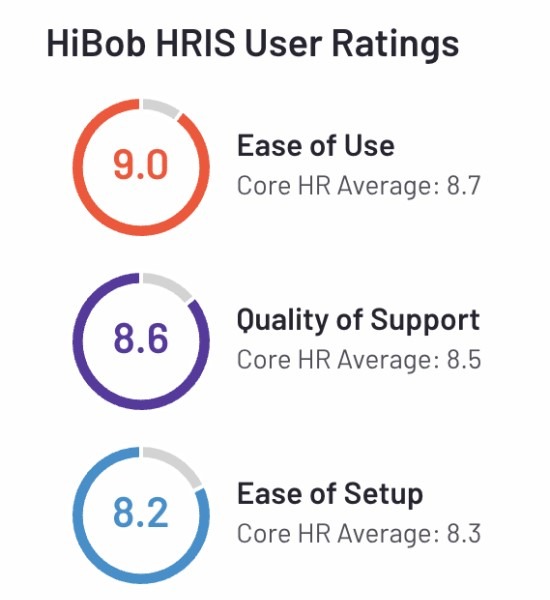
Comparison and Conclusion
Analyzing Paylocity vs Hibob through user reviews and testimonials highlights some key differences:
- Paylocity is valued for its comprehensive functionalities and customization options. However, some users report issues with customer support and implementation.
- Hibob is praised for its user-friendly interface, responsive support, and highly customizable features in certain areas. It also offers integration with Paylocity for payroll purposes.
Interestingly, despite the differences in user feedback, both platforms show identical scores for suitability across small businesses, medium-sized companies, and enterprises according to G2 ratings.
In summary:
Both Paylocity and Hibob have their strengths and areas for improvement. Paylocity offers extensive capabilities but may face challenges in support and implementation. Hibob provides a user-friendly experience with responsive support, but has fewer overall ratings to draw conclusions from.
When choosing between the two:
- Consider the importance of comprehensive features versus ease of use for your organization.
- Evaluate the level of support and training you might need during implementation.
- Take into account the integration capabilities, particularly Hibob’s integration with Paylocity for payroll.
- Remember that while user reviews provide valuable insights, they represent individual experiences and may not reflect the most current state of the platforms.
It’s advisable to request demos from both providers and, if possible, speak with current users to get a more complete picture of how each platform might serve your specific business needs.
Conclusion
In this comparison of Paylocity vs Hibob, we’ve explored various aspects of both platforms based on available user feedback and ratings. Each platform has its strengths and potential areas for improvement, catering to different organizational needs.
Paylocity Overview
Paylocity offers comprehensive features and customization options, making it a strong contender for organizations with complex HR management needs. Its ability to handle a wide range of HR tasks is appreciated by many users. However, some users have reported issues with customer support responsiveness and implementation challenges.
Hibob Overview
Hibob provides a streamlined and user-friendly experience, emphasizing ease of use and employee engagement. It’s noted for having highly customizable performance management, employee surveys, and PTO cycles. Users particularly appreciate its intuitive design and responsive customer support.
Key Considerations
When deciding between Paylocity and Hibob, consider the following:
- User Experience: Hibob is often praised for its user-friendly interface, while Paylocity offers extensive features that may require more training to fully utilize.
- Customer Support: Some users report slow response times from Paylocity’s support, while Hibob receives positive feedback for quick and effective support.
- Customization: Both platforms offer customization options, with Hibob noted for its flexibility in certain areas like performance management and surveys.
- Integration: Hibob integrates with Paylocity for payroll purposes, which could be a significant factor for some businesses.
- Company Size Adaptability: Interestingly, both platforms show identical scores for suitability across small businesses, medium-sized companies, and enterprises according to G2 ratings.
User Satisfaction
According to G2 ratings:
- Paylocity has a “Likelihood to Recommend” score of 7.9 out of 10 and a support rating of 7.2 based on 87 ratings.
- Hibob has a slightly higher “Likelihood to Recommend” score of 8.0 out of 10 and a support rating of 6.9, though this is based on only 4 ratings.
Final Thoughts
Both Paylocity and Hibob offer compelling features for HR management, but they have different strengths. Paylocity provides extensive functionality but may face challenges in support and implementation. Hibob offers a user-friendly experience with responsive support and highly customizable features in certain areas.
The choice between Paylocity and Hibob should align with your organization’s specific needs, workforce characteristics, and long-term HR strategies. Consider factors such as the importance of comprehensive features versus ease of use, the level of support and training you might need during implementation, and integration capabilities.
Remember that while user reviews provide valuable insights, they represent individual experiences and may not reflect the most current state of the platforms. It’s advisable to request demos from both providers and, if possible, speak with current users to get a more complete picture of how each platform might serve your specific business needs.
Ultimately, both Paylocity and Hibob have the potential to significantly enhance your human resources management, but the best choice will depend on a careful assessment of how well each platform’s features align with your organizational goals and challenges.
![]()
![]() Read our full Paylocity review
Read our full Paylocity review
![]()
![]() Read our full Hibob review
Read our full Hibob review

